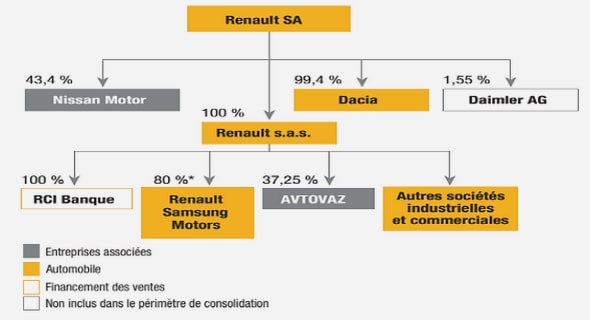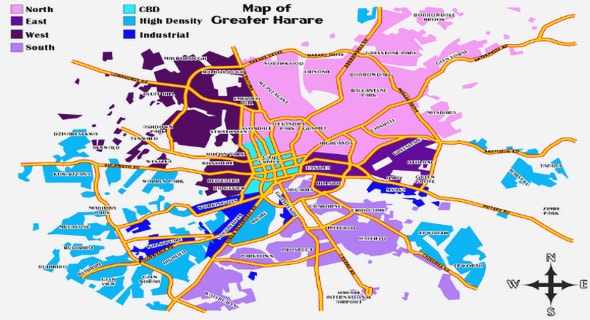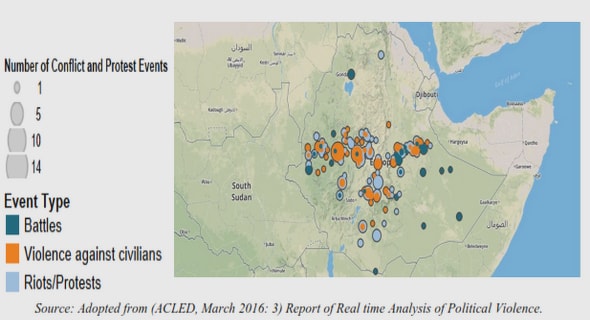Get Complete Project Material File(s) Now! »
Dynamical variation of the vertical confinement
The loading of the cloud in the large spacing lattice is very efficient and the compression of this lattice is performed in a duration 0:2 s, which corresponds to !z 1 with the smallest vertical frequency we use, as we will see.
We measure the vertical frequency !z by giving a vertical kick to the cloud and observing its oscillation in the vertical harmonic trap. More precisely we let the cloud evolve in this trap during a variable duration, then we release all traps and let the atoms fall freely. After a few microseconds we look at the vertical position of the atoms which is mostly sensitive to the velocity of the atoms when they are released. A sinusoidal fit of this position as a function of time provides !z. On Fig. 2.7 is reported this measurement as a function of the inverse lattice spacing. It is in good agreement with the expectation given by equation 2.5.
In the following, we usually work with a lattice spacing of d = 2 μm, and we reduce the power of the laser beams to decrease !z around 4 kHz, which corresponds to a lattice depth U kB 4:2 μK. As a comparison, the potential energy due to gravity on the length scale of one fringe is mgd = kB 0:2 μK. We found this configuration more favourable to obtain a uniform cloud than keeping a high intensity. This uniformity is the subject of the next paragraph.
Implementation of a box potential
Having a cloud with a uniform density is a great advantage when investigating properties of the gas that depend on its density. In cold atoms, the use of uniform gases has developed for a few years, both for Bose and Fermi gases [59, 66–68, 103] with the development of box potentials.
We have implemented such a box potential, which also has a high tunability. We use a blue-detuned laser beam (wavelength 532nm) and send it on a digital micro-mirror device (DMD). This device consists of an array of micromirrors which can individually be turned on or off by modifying their spatial orientation. We image the surface of this DMD onto the atomic plane by using our microscope objective, and we obtain light only on the position of the ‘on’ pixels. We have a magnification of 1=70 between the DMD and the atoms (see [65] for a precise calibration). This means that a single pixel of the DMD, which measures 13:68 μm, represents 0:2 μm on the atoms, well below the resolution of the microscope objective. The atoms are repelled by light at the wavelength we use, and they are therefore trapped in the dark regions of the beams, where the mirrors of the DMD are off. They are confined by walls of light whose maximal height is around kB 6 μK.
The beam has a waist of 45 μm on the atoms, which means that we are able to create a box potential with an edge to edge distance up to 100 μm and with a resolution of 1 μm. The DMD is easily programmable and the shape of the cloud can be modified at will. Fig. 2.8 presents a few examples of absorption images of the atomic density in this tunable box potential.
Additional features of the DMD
The tunability of the DMD allows us to go beyond static box potentials. Here are two features that we have used in the past and can use in the future:
1. Dynamical potentials: The DMD can display different images at a rate up to a few kilohertz, thus modifying the potential on the atoms. The fact that the effective size of one pixel of the DMD on the atoms is smaller than the resolution of the microscope objective helps to make the dynamics of this potential smooth. We have used this feature when studying the recombination of independent condensates published in [69].
2. Grey levels: By locally switching on a controlled fraction of the micromirrors on the DMD, we can control the intensity we send on the atoms at each position and spatially shape the local density of the cloud at will.
This feature involves a simple algorithm to propagate errors due to the pixelisation of the DMD. These two possibilities have not been used for the experiments presented in this thesis and I will not detail them.
Controlling and quantifying the uniformity of the cloud
A uniform filling of the box potential can be achieved by finely tuning the parameters of the experiment:
The focus of the DMD on the plane of the atoms has to be adjusted to have edges as sharp as possible and as less spurious light in the dark regions as possible.
A gradient along the x direction (transverse to the propagation direction of the accordion beams) can be compensated by slightly modifying the relative power of the two accordion beams. These beams are on purpose not perfectly overlapping in the x direction. Their centres are separated by 10 to 20 μm, so that an intensity imbalance translates into a gradient of potential in the x direction. We modify the relative power of the two beams by rotating a half-wave plate before the first polarising beam splitter of the accordion.
A gradient along the y direction can be compensated by varying the vertical position of the two interfering beams of the accordion on the focussing lens. This is done thanks to two mirrors located between the accordion and the focussing lens. Such a vertical displacement gives a global tilt of the dark fringe in the y direction and the atoms feel a force in this direction due to gravity.
Table of contents :
1 introduction
i producing and manipulating 2d bose gases
2 experimental set-up
2.1 Overview of a cold atom experiment
2.1.1 General features
2.1.2 Taking pictures of atoms
2.2 How to produce a uniform 2D Bose gas
2.2.1 Cooling atoms down to quantum degeneracy
2.2.2 Confining the gas in two dimensions
2.2.3 Creating a cloud with a uniform atomic density
2.3 How to control the initial state of the cloud
2.3.1 The internal state of the atoms
2.3.2 The phase-space density of the cloud and its temperature
2.4 Conclusion
3 implementation of spatially-resolved spin transfers
3.1 How to induce Raman processes on cold atoms
3.1.1 Elements of theory about two-photon transitions
3.1.2 Our experimental set-up
3.2 Raman transitions without momentum transfer
3.2.1 Measuring Rabi oscillations
3.2.2 Focus and size of the DMD
3.2.3 Local spin transfers
3.3 Raman transitions with momentum transfer
3.3.1 Calibrating the momentum transfer
3.3.2 Local spin transfers with a momentum kick
3.4 Conclusion
ii measuring the first correlation function of the 2d bose gas
4 theoretical considerations on the first correlation function
4.1 The first-order correlation function of infinite 2D systems
4.1.1 The XY-model and the BKT transition
4.1.2 An ideal gas of bosons in 2D
4.1.3 Interacting bosons in 2D
4.2 Developments for realistic experimental measurements
4.2.1 Exciton-polaritons and out-of-equilibrium effects
4.2.2 Cold atoms and trapping effects
4.2.3 Finite-size effects
4.2.4 Conclusion
5 probing phase coherence by measuring a momentum distribution
5.1 Measuring the momentum distribution of our atomic clouds
5.1.1 Creating an harmonic potential with a magnetic field
5.1.2 Evolution of atoms in the harmonic potential
5.2 Investigating the width of the momentum distribution
5.2.1 Influence of the initial size of the cloud
5.2.2 Influence of the temperature of the cloud
5.2.3 Determining the first-order correlation function?
5.3 Conclusion
6 measuring g1 via atomic interferometry
6.1 Interference between two separated wave packets
6.1.1 Free expansion of two wave packets in one dimension
6.1.2 Free expansion of two wave packets in two dimensions
6.2 Setting up and characterising the experimental scheme
6.2.1 The experimental sequence
6.2.2 Measuring the expansion of one line
6.2.3 Measuring the expansion of two lines
6.3 Measuring the phase ordering across the BKT transition
6.3.1 Extracting the contrast of the averaged interference pattern
6.3.2 Results of the measurements across the critical temperature
6.3.3 Discussion and effects that may affect the measurements
6.4 Conclusion
iii dynamical symmetry of the 2d bose gas
7 elements of theory on dynamical symmetries
7.1 Symmetries of a physical system
7.1.1 The symmetry group as a Lie group
7.1.2 Linking different solutions of a differential equation
7.1.3 Linking solutions of two differential equations
7.2 Dynamical symmetry of weakly interacting bosons in 2D
7.2.1 Symmetry group of the free Gross-Pitaevskii equation
7.2.2 Symmetry group with a harmonic trap
7.2.3 Link between different trap frequencies
7.3 More symmetries in the hydrodynaimc regime
7.4 Conclusion 1
8 an experimental approach of dynamical symmetries
8.1 Experimental sequence
8.1.1 The course of events
8.1.2 The measured observables
8.1.3 Some calibrations
8.2 Verification of the SO(2,1) symmetry
8.2.1 Evolution of the potential energy
8.2.2 Evolution in traps of different frequency
8.3 Universal dynamics in the hydrodynamic regime
8.3.1 Evolution with different interaction parameters
8.3.2 Evolution with different sizes and atom numbers
8.4 Conclusion
9 breathers of the 2d gross-pitaevski i equation
9.1 Experimental hints
9.1.1 Initial triangular shape
9.1.2 Initial disk shape
9.2 Numerical simulations
9.2.1 Initially triangular-shaped cloud
9.2.2 Initially disk-shaped cloud
9.2.3 Other initial shapes
9.3 Towards an analytical proof?
9.4 Conclusion
10 conclusion
Appendices
a coupling two hyperfine states with raman beams
b correlation function of an ideal 2d bose gas
c details on the interferometric measurements of g1
d details on the scaling laws of the 2d bose gas
d.1 Free Gross-Pitaevskii equation
d.2 Gross-Pitaevskii equation with a harmonic trap
d.2.1 General case: a variable trap frequency
d.2.2 Particular case: a constant trap frequency
d.2.3 Invariant transformations
d.3 Hydrodynamic equations
e publications
f résumé en français
bibliography


